
Kitagawa Utamaro, Kisegawa of the Matsubaya, from the series “Comparing the Charms of Five Beauties (Gonin bijin aikyo kurabe)”, c. 1795/96, Courtesy Art Institute Chicago
If you’re traveling outside of New York this Thanksgiving holiday, make the most of your journey by exploring captivating exhibitions and enchanting works of art at ten of our member museums nationwide. Below is a list of shows not to miss!
Art Institute Chicago
Transitory Beauty: Japanese Fan Prints
October 17, 2024 – January 20, 2025
This recently opened exhibit highlights the vibrant fan prints of Japan’s Edo period (1615–1868), showcasing designs that featured Kabuki actors, beauties, and landscapes. These fans, available in two shapes: the folding fan (ōgi) and the round fan (uchiwa), were often adorned with colorful scenes, many created by the prolific artist Utagawa Hiroshige. While most fans were heavily used and worn out, many in the Art Institute’s collection survived because they were never mounted on bamboo sticks and thus were never used. The display also explores the cultural significance of fans, including depictions of them and fan-inspired shapes in Japanese prints.
To learn more, click here.
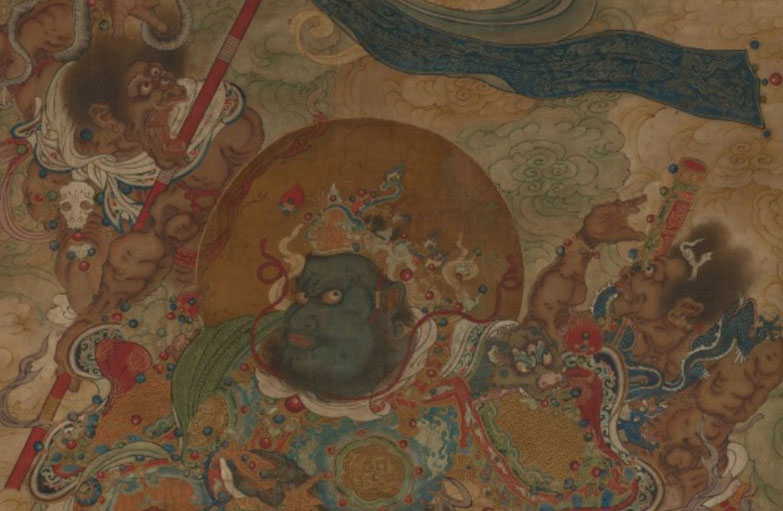
Heavenly King Virudhaka, 1368–1644. China, Ming dynasty (1368–1644). 1918.544, Courtesy The Cleveland Museum of Art
The Cleveland Museum of Art
Demons, Ghosts, and Goblins in Chinese Art
September 8, 2024 – January 20, 2025
Step into a world of the supernatural with Demons, Ghosts, and Goblins in Chinese Art, an exhibition that delves into the dual nature of these mysterious beings—both as harbingers of harm and protectors against evil. Featuring 20 sculptures and paintings from a private collection and the Cleveland Museum of Art, the show explores the stories in which they appear and the supernatural power that they exert.
To learn more, click here.
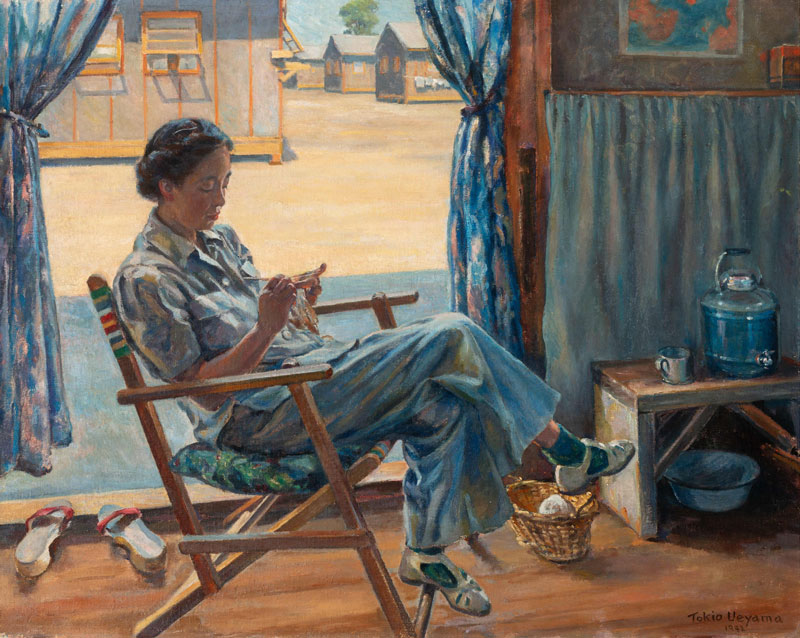
Tokio Ueyama, The Evacuee, 1942, oil on canvas, 24 x 30 in; Courtesy Japanese American National Museum; Gift of Kayoko Tsukada; ©Estate of Tokio Ueyama, Courtesy Denver Art Museum
Denver Art Museum
The Life and Art of Tokio Ueyama
July 28, 2024 – June 1, 2025
This exhibit tells the story of this accomplished artist’s life, including his early days as an art student in San Francisco, Southern California, and Philadelphia; his travels abroad; his role as artist and community member in Little Tokyo, Los Angeles; and his incarceration during World War II at the Granada Relocation Center, now the Amache National Historic Site, in southeast Colorado. There, Ueyama taught adult art classes to 150 students. This exhibition tells a story of a time in Colorado’s history, of a place where Americans experienced dislocation and loss, and, more importantly, displayed unimaginable resilience, tenacity, and creativity in the face of prejudice.
To learn more, click here.
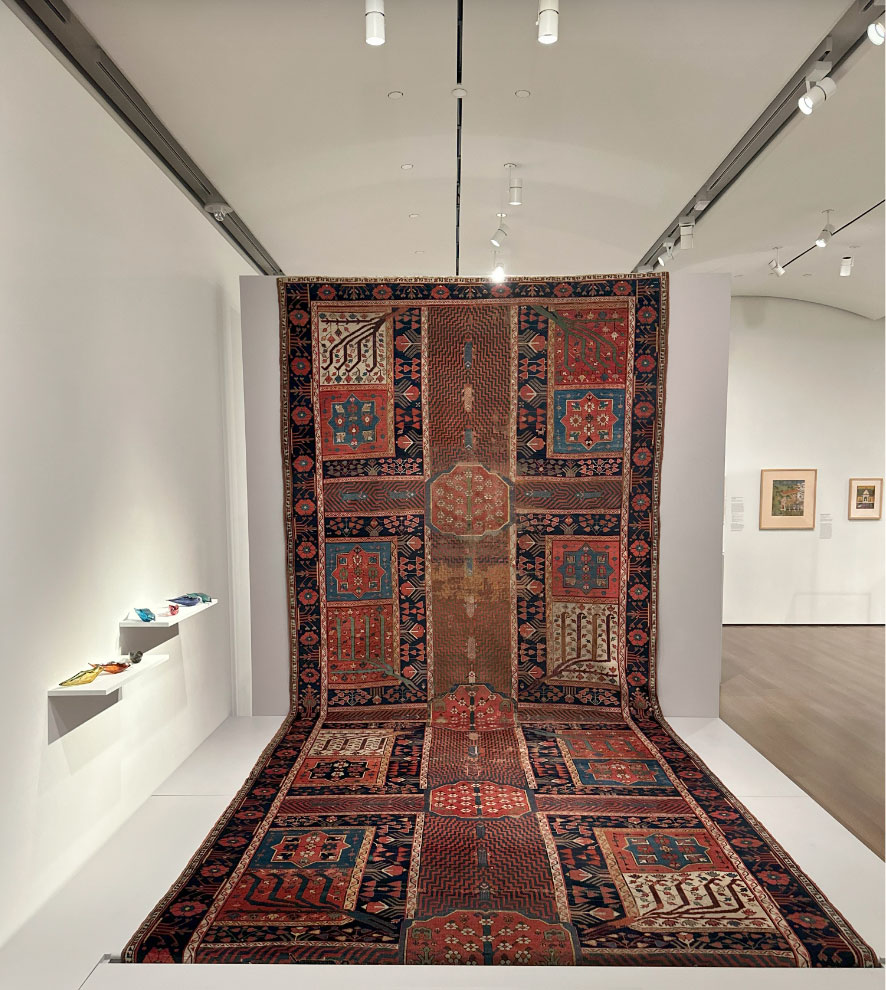
Garden carpet, Iran, 18th century, cotton warp, wool weft, and pile, Harvard Art Museums/Arthur M. Sackler Museum, Gift of Joseph V. McMullan, 1957.137
Harvard Art Museums
Garden Paradise
Through October 2025
This newly opened installation in their Islamic and South Asian Art galleries delves into the profound significance of gardens in the Islamic world, where they were integral to palatial, religious, and funerary complexes and celebrated in literature as earthly paradises. In the Qur’an, paradise is promised to believers as a beautiful garden to rest and enjoy, with four flowing rivers of clear water, non-intoxicating wine, pure honey, and milk, as well as aromatic plants and fruit-bearing trees. During the Islamic era, gardens in Iran and Central and South Asia merged this idea of a four-river paradise with the ancient Persian cross-axial garden to form a four-part garden design known as the chahar bagh.
To learn more, click here.
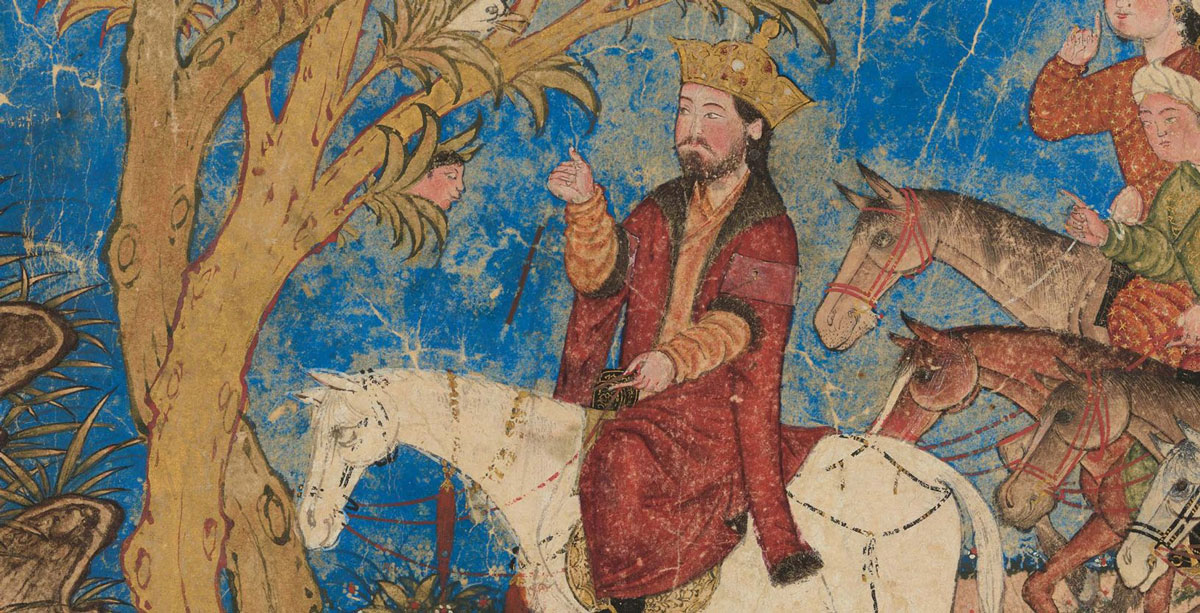
Iskandar and the talking tree (detail), folio from the Great Mongol Shahnama (Book of kings), Iran, probably Tabriz, Ilkhanid dynasty, ca. 1330, ink, color, and gold on paper, National Museum of Asian Art, Smithsonian Institution, Freer Collection, Purchase—Charles Lang Freer Endowment, F1935.23
National Museum of Asian Art
An Epic of Kings: The Great Mongol Shahnama
September 21, 2024 – January 12, 2025
Monumental in scale and vividly illustrated, the Great Mongol Shahnama stands as one of the most renowned masterpieces of medieval Persian art, completed by the poet Firdawsi around 1010. An Epic of Kings offers a once-in-a-lifetime opportunity to see twenty-five folios from this now dismantled manuscript. It is also the first exhibition to present paintings from the Great Mongol Shahnama alongside contemporaneous works from China, the Mediterranean, and the Latin West. Experience this unique historical moment of cultural exchange across Eurasia—where commodities, people, and ideas circulated like never before—with Iran at its center.
To learn more, click here.
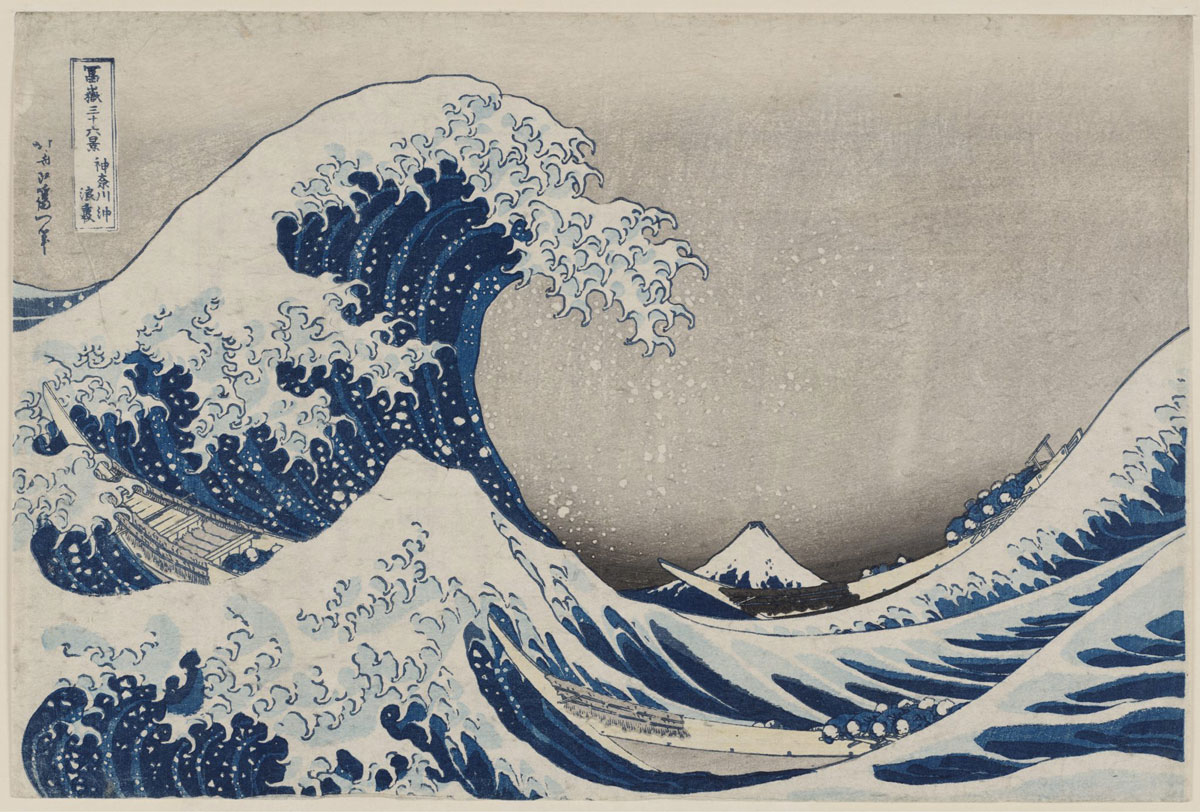
Katsushika Hokusai (Japanese, 1760–1849). Under the Wave off Kanagawa (Kanagawa‑oki nami‑ura), also known as the Great Wave, from the series Thirty‑six Views of Mount Fuji (Fugaku sanjūrokkei), about 1830–1831, Tenpō Era (1830–1844), woodblock print (nishiki‑e), ink and color on paper, 9 15/16 × 14 13/16 in.; Museum of Fine Arts, Boston, William Sturgis Bigelow Collection; Photograph © Museum of Fine Arts, Boston, Courtesy Nelson-Atkins Museum of Art
Nelson-Atkins Museum of Art
Hokusai: Waves of Inspiration from the Museum of Fine Arts, Boston
September 21, 2024 – January 5, 2025
Katsushika Hokusai (1760–1849) is one of the most famous Japanese artists in history, thanks largely to his instantly recognizable print known familiarly as the Great Wave. Hokusai: Waves of Inspiration features work from his own expansive and versatile career as well as objects in many different media by the generations of artists that he inspired. With roughly 100 works of art by Hokusai himself, this exhibit highlights the breadth of subjects the artist tackled along with 200 additional works by the artist’s teachers, family, students, rivals, and worldwide admirers. The exhibition traces Hokusai’s artistry to unexpected places across time, place, and medium and shows how he defined, reinvented, and elevated every art form he engaged with.
To learn more, click here.

Katsushika Hokusai (Japanese, 1760–1849), Nihonbashi Bridge in Edo (Edo Nihonbashi), from the series Thirty-Five Views of Fuji (Fugaku Sanjūrokkei), c. 1833, color woodcut, 9 13/16 x 14 9/16 inches (24.9 x 37 cm), Courtesy Philadelphia Museum of Art
Philadelphia Museum of Art
Visions of the Land in Edo Japan
Through January 13, 2025
Pictorial representations of the land blossomed in Japan during the Edo period (1615–1868), an era of peace and prosperity. Landscape painters and printmakers created a large number of works with new ideas and techniques that had recently become available. Featuring recent acquisitions and choice examples from museum’s collection, this exhibition invites you to explore the three modes of landscape presented—poetic, iconic, and panoramic. Together, these visions of the land manifest the dynamism of Edo Japan.
To learn more, click here.

Coffee Service, Worcester Royal Porcelain Company, probably decorated by John Hopewell (1975-1879), Gift of Mrs. Alletta Morris McBean, PSNC.8550.1ab-.6ab, Courtesy The Preservation Society of Newport County
The Preservation Society of Newport County
Wild Imagination: Art and Animals in the Gilded Age
August 30, 2024 – January 12, 2025
During the Gilded Age (1870–1914), Americans’ relationship with animals underwent a profound transformation. This exhibit, with a focus on Newport history, examines how this dynamic and tumultuous era shaped the role of animals in our modern world. Bringing together a menagerie of animal-themed artworks and other objects, from paintings, sculptures, photographs and fashions to fancy dog collars and sea creatures blown in glass, Wild Imagination reflects upon the profound and lasting changes in human-animal relations, while also revealing the individual stories of wondrous creatures that continue to capture our imagination.
To learn more, click here.
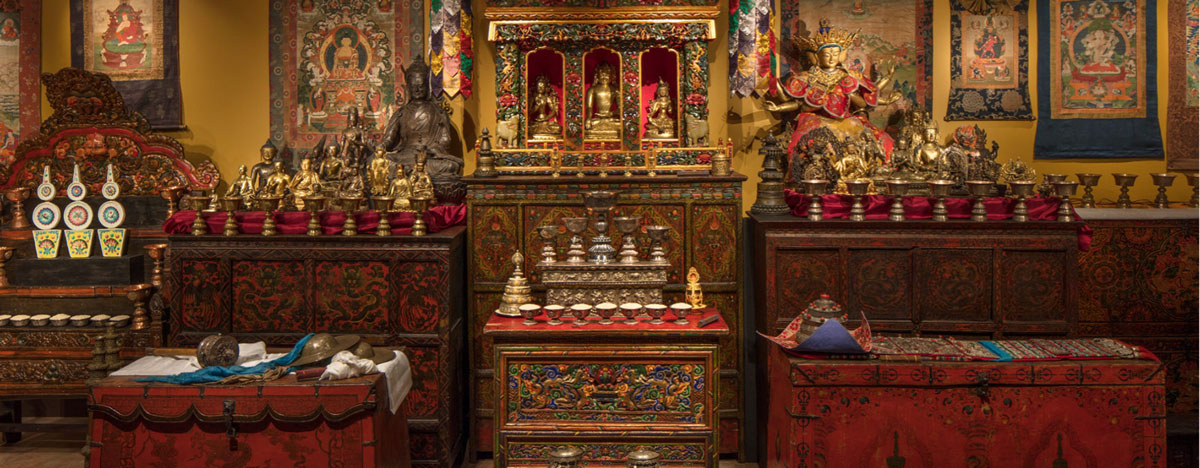
Installation view, Gateway to Himalayan Art, Courtesy Rubin Museum of Himalayan Art
Rubin Museum of Himalayan Art
Gateway to Himalayan Art
August 28 – December 12, 2024
Frank Museum of Art, Otterbein University, Westerville, OH
Gateway to Himalayan Art is a traveling exhibit for colleges, universities, and art museums that introduces the main forms, concepts, meanings, and living traditions of Himalayan art. Currently on view at the Frank Museum of Art at Otterbein University in Ohio, this presentation’s three areas of focus are Symbols and Meanings, Materials and Technologies, and Living Practices. Traditional scroll paintings (thangkas), sculptures in various media, and ritual items comprise the diverse range of objects on view.
To learn more, click here.
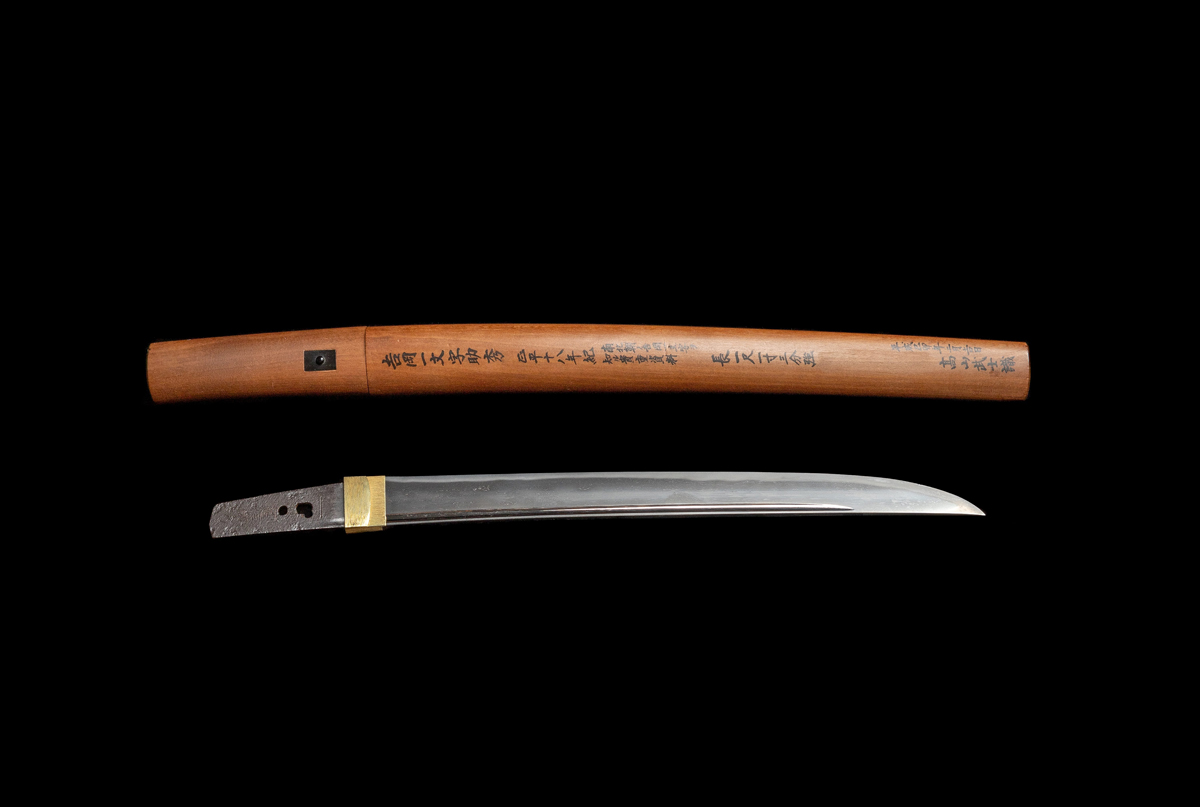
Yoshioka Ichimonji Sukehide, Japanese, active ca. 1360, Wakizashi (Short Sword), Jūyo Token, Signed: Sukehide, 7th month, 18th year [of the Shōhei era], July 1363, Handmade and polished steel, 13 3/4 in. (35 cm), San Antonio Museum of Art, acquired in memory of Robert R. Clemons with funds realized from his estate, 2022.11.1
San Antonio Museum of Art
Samurai Spirit: Swords, Accessories, and Paintings
January 6, 2024 – January 26, 2025
First shared through oral tradition, tales of epic battles, heroic exploits, and legendary samurai warriors became enduring themes in Japanese literature, theater, and art. Central to these stories were the samurai swords, polished to perfection and intricately adorned, revered as symbols of honor and heritage. This exhibit highlights two remarkable 14th century swords: a wakizashi (short sword) signed by its maker, Yoshioka Ishimonji Sukehide, and dated July 1363, and a katana (long sword), traditionally wielded with two hands. Complemented by other samurai weapons and artifacts, this collection offers an engaging introduction to a cornerstone of traditional Japanese culture.
To learn more, click here.
